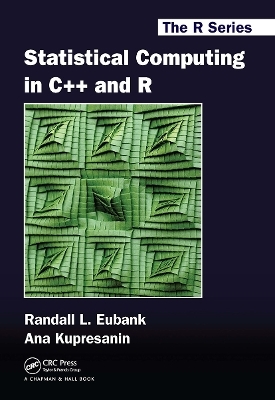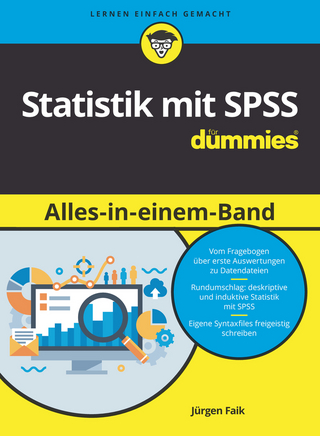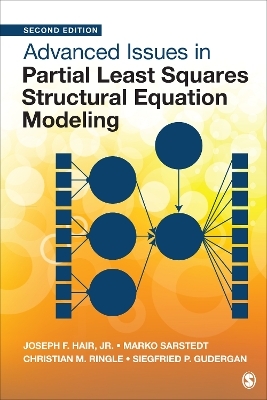
Statistical Computing in C++ and R
Seiten
2023
CRC Press (Verlag)
978-1-032-47761-9 (ISBN)
CRC Press (Verlag)
978-1-032-47761-9 (ISBN)
Parallel processing can be ideally suited for the solving of more complex problems in statistical computing. This book discusses code development in C++ and R, before going beyond to look at the valuable use of these two languages in unison. It covers linear equation solution with regression and linear models motivation, optimization with maximu
With the advancement of statistical methodology inextricably linked to the use of computers, new methodological ideas must be translated into usable code and then numerically evaluated relative to competing procedures. In response to this, Statistical Computing in C++ and R concentrates on the writing of code rather than the development and study of numerical algorithms per se. The book discusses code development in C++ and R and the use of these symbiotic languages in unison. It emphasizes that each offers distinct features that, when used in tandem, can take code writing beyond what can be obtained from either language alone.
The text begins with some basics of object-oriented languages, followed by a "boot-camp" on the use of C++ and R. The authors then discuss code development for the solution of specific computational problems that are relevant to statistics including optimization, numerical linear algebra, and random number generation. Later chapters introduce abstract data structures (ADTs) and parallel computing concepts. The appendices cover R and UNIX Shell programming.
Features
Includes numerous student exercises ranging from elementary to challenging
Integrates both C++ and R for the solution of statistical computing problems
Uses C++ code in R and R functions in C++ programs
Provides downloadable programs, available from the authors’ website
The translation of a mathematical problem into its computational analog (or analogs) is a skill that must be learned, like any other, by actively solving relevant problems. The text reveals the basic principles of algorithmic thinking essential to the modern statistician as well as the fundamental skill of communicating with a computer through the use of the computer languages C++ and R. The book lays the foundation for original code development in a research environment.
With the advancement of statistical methodology inextricably linked to the use of computers, new methodological ideas must be translated into usable code and then numerically evaluated relative to competing procedures. In response to this, Statistical Computing in C++ and R concentrates on the writing of code rather than the development and study of numerical algorithms per se. The book discusses code development in C++ and R and the use of these symbiotic languages in unison. It emphasizes that each offers distinct features that, when used in tandem, can take code writing beyond what can be obtained from either language alone.
The text begins with some basics of object-oriented languages, followed by a "boot-camp" on the use of C++ and R. The authors then discuss code development for the solution of specific computational problems that are relevant to statistics including optimization, numerical linear algebra, and random number generation. Later chapters introduce abstract data structures (ADTs) and parallel computing concepts. The appendices cover R and UNIX Shell programming.
Features
Includes numerous student exercises ranging from elementary to challenging
Integrates both C++ and R for the solution of statistical computing problems
Uses C++ code in R and R functions in C++ programs
Provides downloadable programs, available from the authors’ website
The translation of a mathematical problem into its computational analog (or analogs) is a skill that must be learned, like any other, by actively solving relevant problems. The text reveals the basic principles of algorithmic thinking essential to the modern statistician as well as the fundamental skill of communicating with a computer through the use of the computer languages C++ and R. The book lays the foundation for original code development in a research environment.
Randall L. Eubank, Ana Kupresanin
Introduction. Computer Representation of Numbers. A Sketch of C++. Generation of Pseudo-Random Numbers. Programming in R. Creating Classes and Methods in R. Numerical Linear Algebra. Numerical Optimization. Abstract Data Structures. Data Structures in C++. Parallel Computing in C++ and R. An Introduction to Unix. An Introduction to R. C++ Library Extensions (TR1). The Matrix and Vector Classes. The ranGen Class. References. Index.
| Erscheinungsdatum | 11.01.2023 |
|---|---|
| Reihe/Serie | Chapman & Hall/CRC The R Series |
| Zusatzinfo | 28 Illustrations, black and white |
| Verlagsort | London |
| Sprache | englisch |
| Maße | 178 x 254 mm |
| Gewicht | 1040 g |
| Themenwelt | Mathematik / Informatik ► Mathematik ► Computerprogramme / Computeralgebra |
| Mathematik / Informatik ► Mathematik ► Statistik | |
| Technik ► Elektrotechnik / Energietechnik | |
| Technik ► Umwelttechnik / Biotechnologie | |
| ISBN-10 | 1-032-47761-X / 103247761X |
| ISBN-13 | 978-1-032-47761-9 / 9781032477619 |
| Zustand | Neuware |
| Haben Sie eine Frage zum Produkt? |
Mehr entdecken
aus dem Bereich
aus dem Bereich
Buch | Softcover (2024)
SAGE Publications Inc (Verlag)
72,30 €
An Introduction
Buch | Hardcover (2023)
SAGE Publications Ltd (Verlag)
144,65 €


